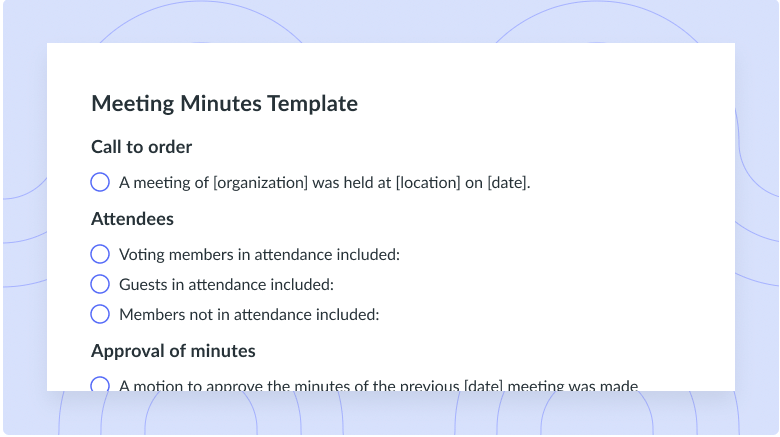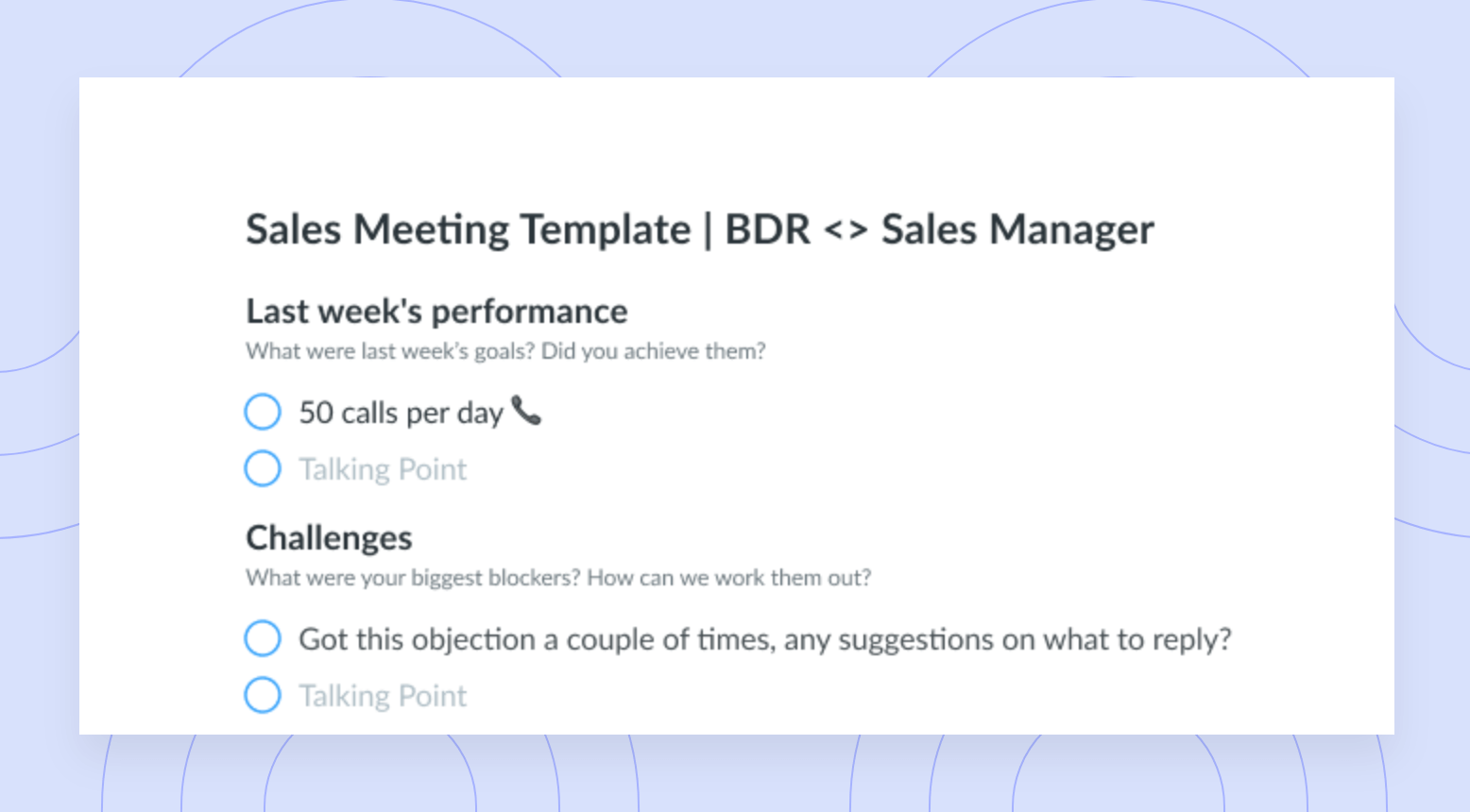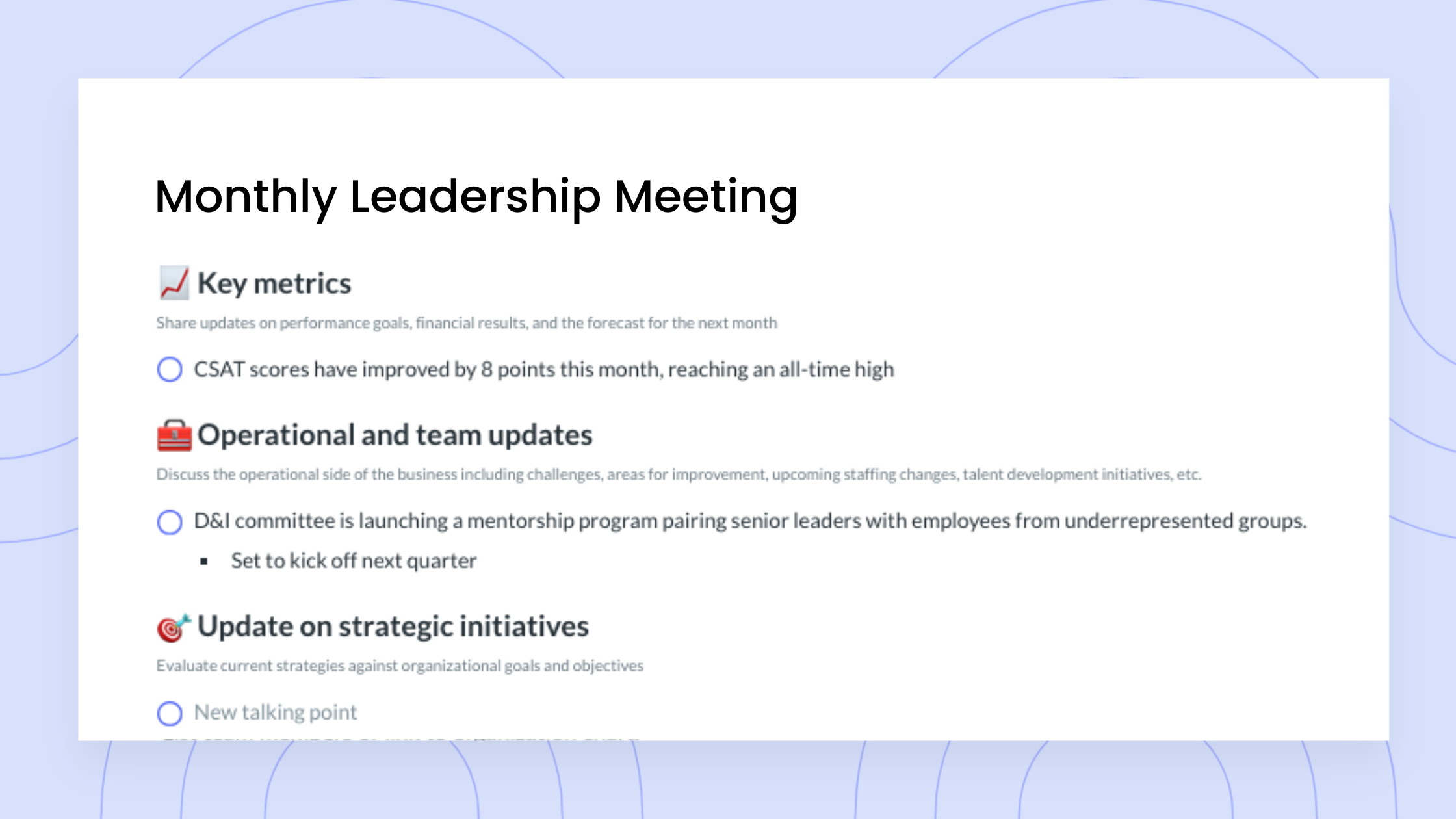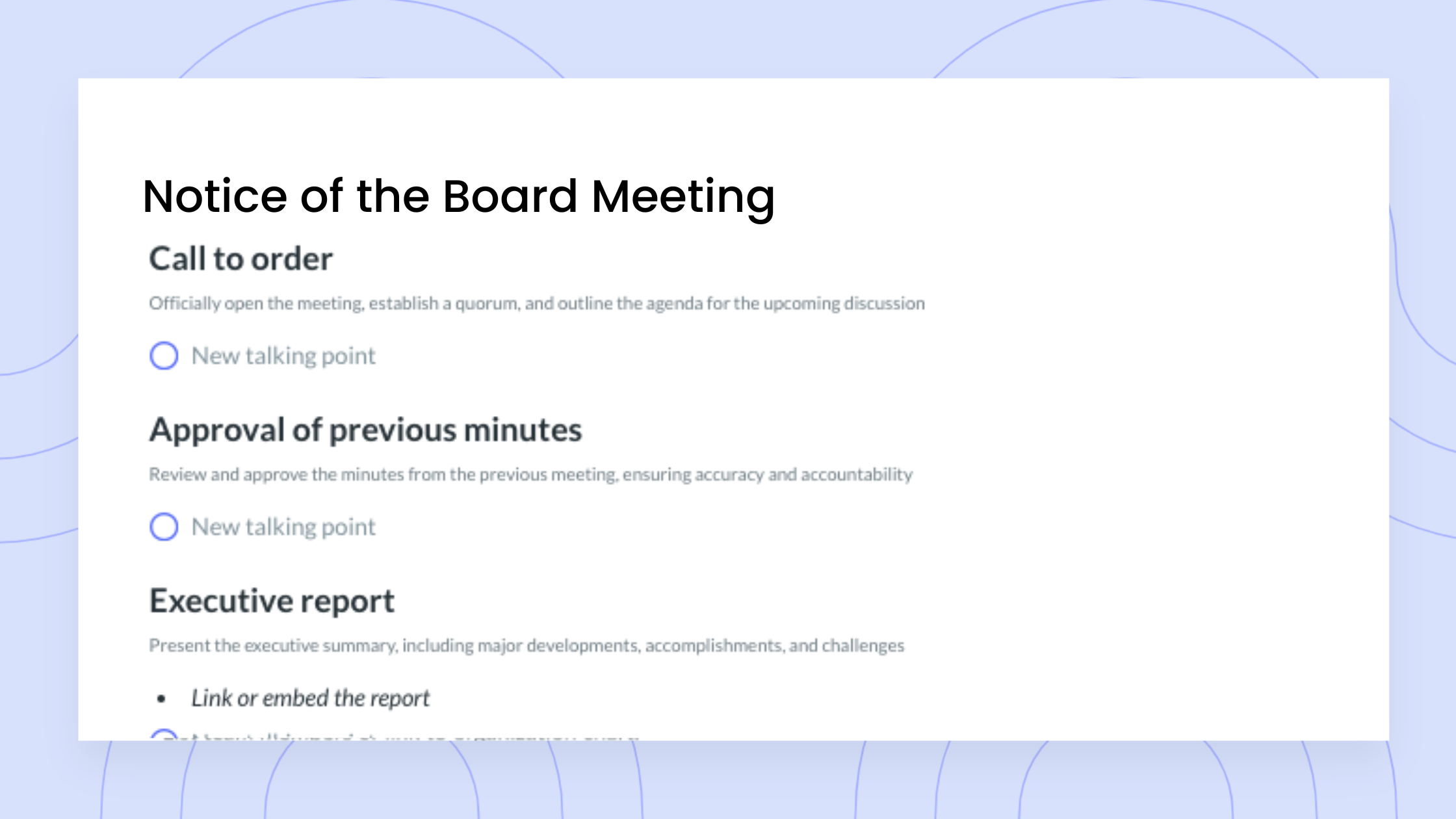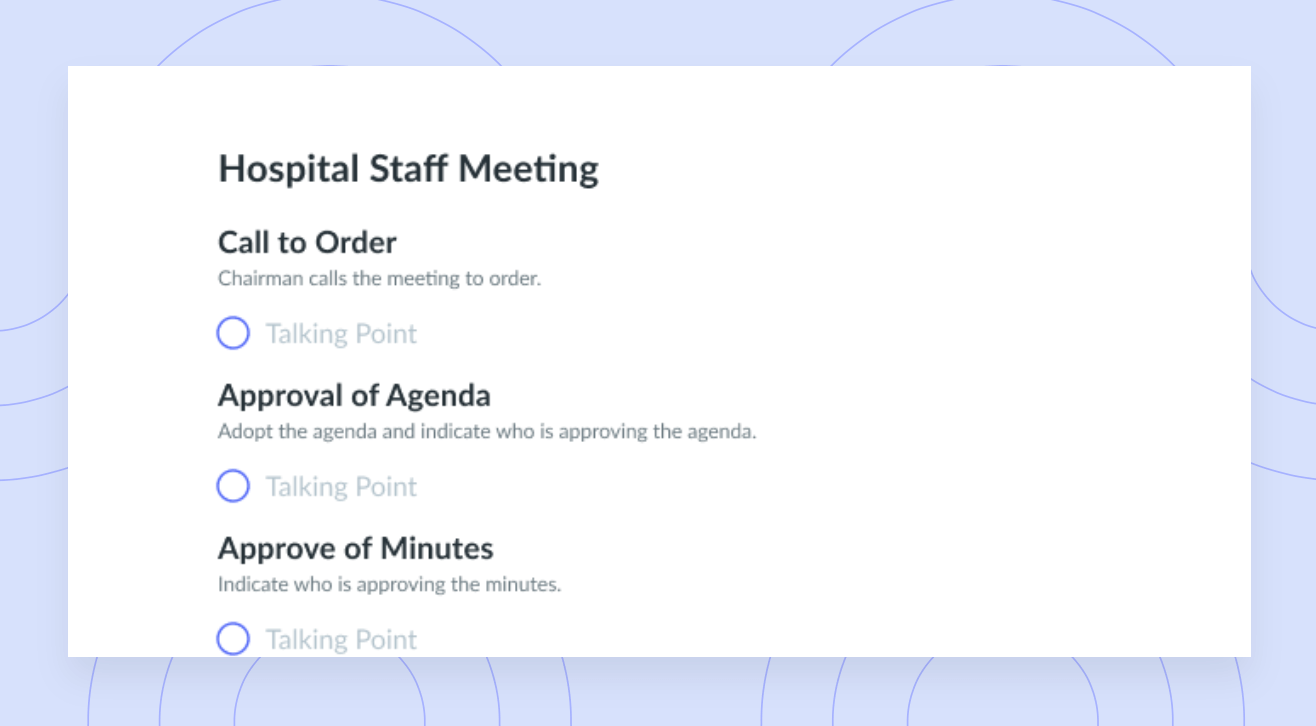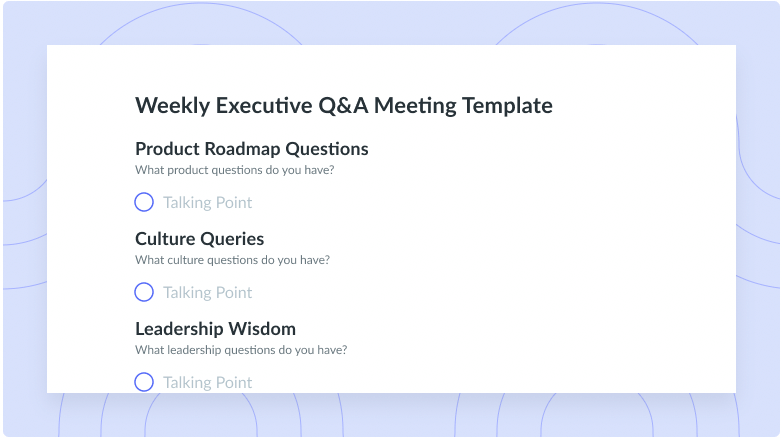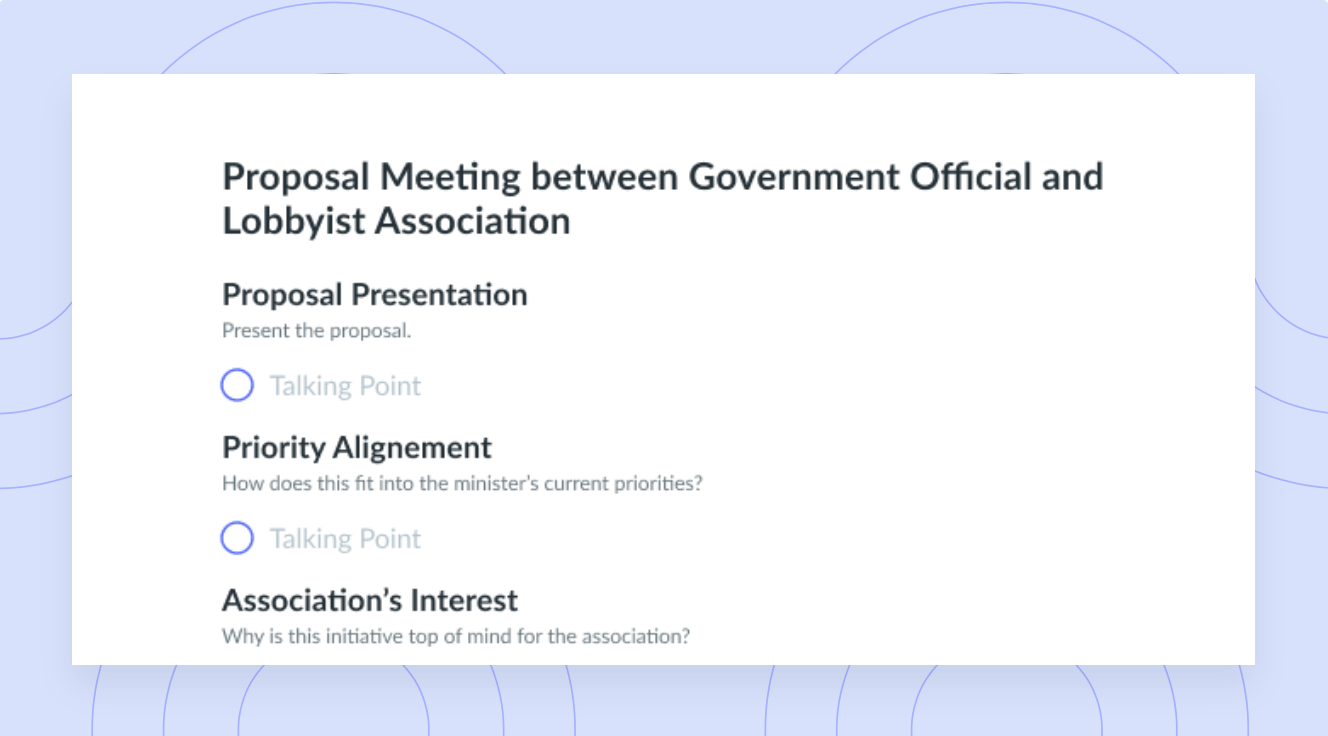6-Steps Guide for An Effective Executive Meeting
Drive interesting discussions and debates about the company’s initiatives and future directions with these discussion points, tips and meeting agenda templates for your next executive meeting.
Executive team meetings establish alignment across the company’s goals, its corporate approach and strategy. Leadership team meetings provide an excellent opportunity for the executive leadership to strengthen their relationships and working synergies so that together, they can ensure the successful implementation of company-wide initiatives. The executive team meeting is a time to iron out key questions, engage in problem-solving and participate in discussion and debate to make effective decisions. This type of high-level staff meeting occurs on a regular basis so that the most pertinent topics can be consistently considered.
To ensure you are set up for success, use an executive meeting agenda in order to use your team members’ valuable time wisely and establish a path for long-term success. This article will cover what an executive meeting is, what should be discussed in this type of meeting and some insightful tips to run this type of meeting in the most favourable way possible.
- What is the executive meeting?
- What should be discussed at executive meetings?
- Executive meeting agenda examples
- 6 tips to run effective executive meetings
What is the executive meeting?
The executive meeting is a weekly meeting which is typically company-wide and includes components from board meetings. Executive meetings aim to address and give an opportunity for the board and leadership team to meet in private and discuss pertinent and often sensitive information, related to the organization and its processes. An executive team meeting may include solely the board members or may choose to include the leadership team, depending on the nature of information sharing. This type of meeting fosters strong discourse and strengthens trust and communication at a high level within the company.
What should be discussed at executive meetings?
Positive news
Sharing positive news at your executive meetings is going to motivate your leadership team. This is important seeing as motivation and encouragement is needed at every level of the organization. This shows the team that their hard work has paid off and that it hasn’t gone unnoticed. Sharing company-wide positive news is going to leave you and your colleagues feeling energized and motivated for the rest of the meeting. What’s more, sharing positive news will bring your leadership team closer together and build morale.

Never forget what was discussed.
When your calendar is full of meetings, it can be hard to remember what was discussed at each one. Use Fellow to easily recall past meeting notes, collaborate on agendas, and prepare for the future!
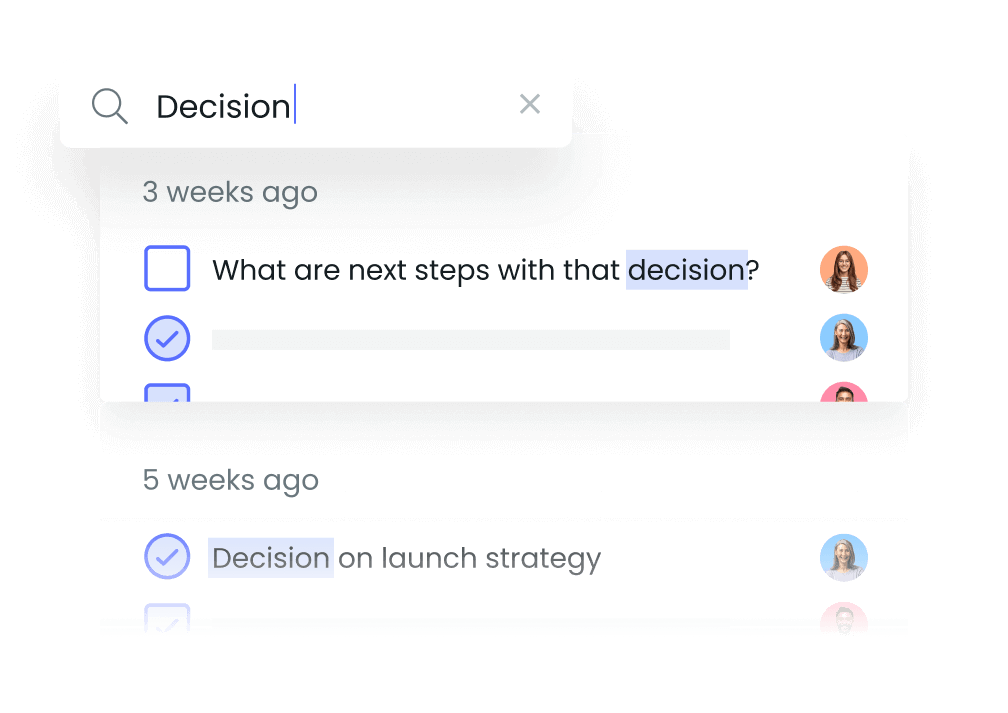
Department goals or OKRs
As you continuously track and measure your company’s performance and successes through corporate goals or OKRs, it’s important to highlight any progress that has been made. In a recent article by First Round Interview, they interview Allison Pickens, Founder and General Partner of The New Normal Fund who suggests that you rotate your roster of metrics in your executive meetings:
“Typically, I find it helpful for folks to share the current metric relative to target, the forecast, and the ‘why’ behind any deltas we’re forecasting above or below the target,” she says. “The why becomes more important than the actual number. We should be able to explain ‘Here are the contributing factors and what initiatives are underway in order to bring that metric back up.”
Projects and initiatives to be aware of
Make sure to bring up any important updates or decisions on projects and initiatives that are ongoing. It’s important to ask the leadership team to identify what their top objectives are to discuss in the executive team meeting, and how these objectives relate to the company’s projects and overarching goals. More specifically, you want your executive team to bring up the work that they are engaged with that is going to impact the rest of the group and the way in which the company operates.
Customer and employee headlines
Any customer or employee headlines should be raised in executive meetings. The impact of the business and it’s initiatives on its people is extremely important and merits attention. Executives should be aligned with their team in order to provide updates on the overall doing of the team as well as any feedback from customers or clients. This is crucial feedback that should be discussed to ensure the long-term satisfaction of those affected by business decisions.
Puzzles and roadblocks
Any challenges or roadblocks that have been faced need to be brought up in the leadership meeting. Because you have your most influential and informed employees in the same room, this is an opportune time to have strategic discussions and debates. Here, you can encourage team members to directly and openly call out issues and work together to create mediation and mitigation plans accordingly. This is where consensus building and important decision-making takes place.
Executive meeting agenda examples
Executive alignment is essential for strategic decisions to be made for the organization. Use these executive team meeting agendas to ensure business goals are successfully met.
Executive Team Meeting Agenda
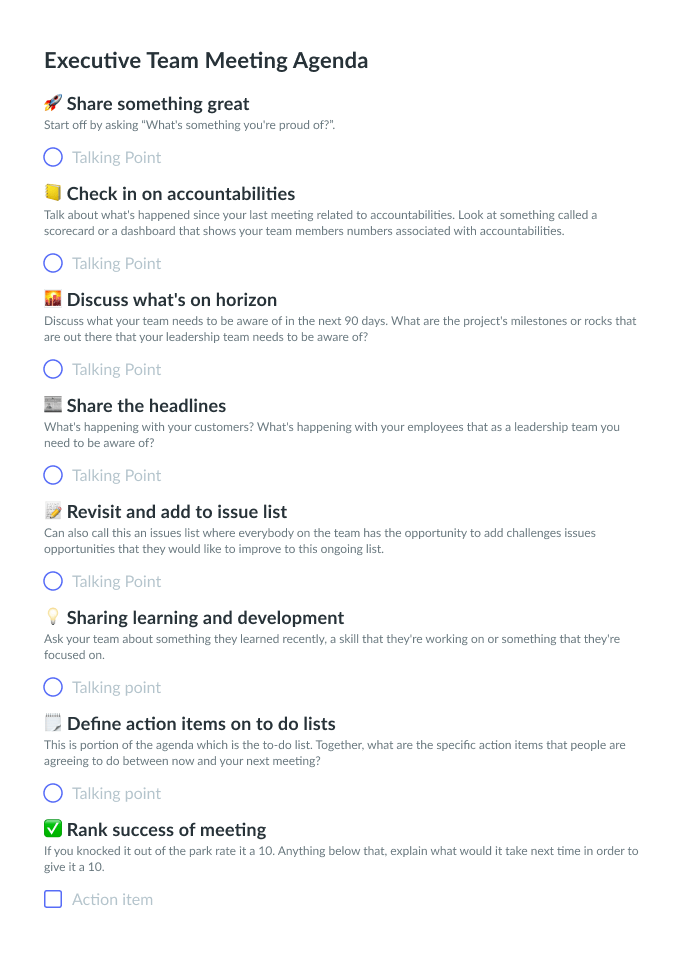
Executive Decision Making Meeting Template

Weekly Town Hall Meeting Agenda
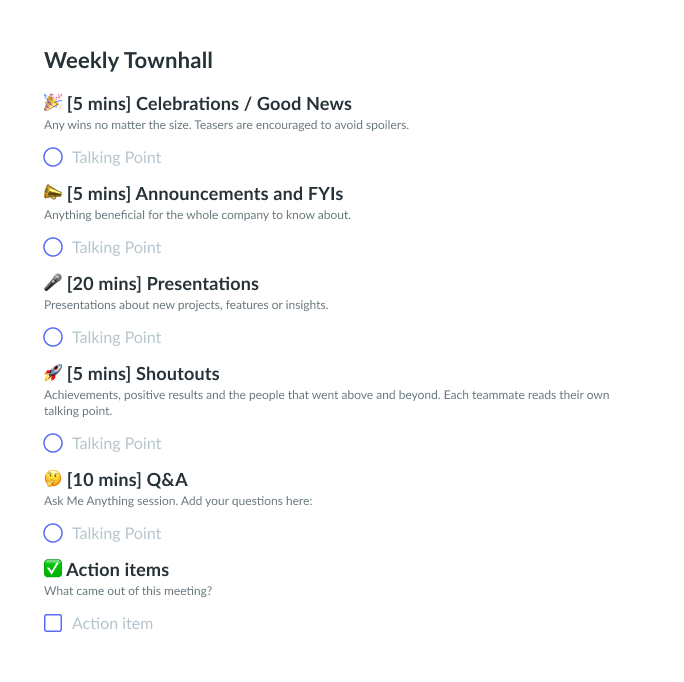
6 tips to run effective executive meetings
- Be strategic when scheduling it
- Share the agenda ahead of time to avoid surprises
- Always start with a check-in
- Encourage healthy debate
- Don’t let discussions drag on
- Make it a psychologically safe environment
1 Be strategic when scheduling it
It’s important to be strategic when you engage in the scheduling of your executive meetings.
The actual meeting time is very important because you want the nature of this meeting to be consistent and recurring. This means you must be both thoughtful and intentional with the day and time that you select. In another interview conducted by First Round Interview, they speak with Edith Harbaugh, Co-founder and CEO of LaunchDarkly. She shares:
“When the meeting date and time is always changing, I’ve found it to be a lot less effective. Schedules don’t always align, folks can’t make the new time, or you end up not having that much to talk about because you just met a few days earlier,” she says. “I try to keep the date and time exactly the same — even if that means I’m calling in from 5 a.m. in Tokyo or 10 p.m. in Portugal.”
2 Share the agenda ahead of time to avoid surprises
Make sure that you create the meeting agenda ahead of time so that you can collaborate with your team members on agenda items to cover. This means initially designing a detailed template, which you can modify each week according to what your leadership team would like to focus on. When the meeting agenda is sent in advance, using the same format, this avoids any kinds of surprises and puts your participants more at ease, knowing exactly what they are walking into, especially having had the time to prepare discussion points for every agenda item. Importantly, don’t forget to leave a section of your meeting agenda for meeting notes and a section to follow up on actions.
3 Always start with a check-in
Start every one of your executive meetings with a check-in. This gives every person in the room an opportunity to understand what each individual has on their plate and what may be weighing heavily on their minds. When there are many distractions present, it’s difficult to focus- so when you check-in with each attendee, this gives them an opportunity to let go of whatever else they may be carrying with them in order to find better focus during the meeting. Encourage your leadership team to bring up anything on their minds, professionally or personally. Being up front and honest with your team members is going to build your relationships, trust and working synergy.
4 Encourage healthy debate
Positive and constructive debates are going to pave the way for smart and strategic decisions. In order to encourage healthy debates, you need to first foster an environment and a culture where each person feels comfortable disagreeing (in a respectful way). In another interview that First Round Interview conducted with Jack Altman, CEO and co-founder at Lattice. Jack shares,
“The best meetings are when there’s substantive debate, with different ideas that are both reasonable and well informed. That’s where real progress happens. Those are the moments when you realize that you saw angles of the problem you didn’t see before or you learned about new tradeoffs. As opposed to ‘We all agreed and just moved along to the next topic,’ where a lot less learning happens.”
5 Don’t let discussions drag on
You have a limited time in your executive meetings to cover a range of topics, each person having specific areas that are more important to them and their work. Don’t let discussions drag on. It’s a good idea to assign a specific amount of time to each agenda so that you don’t go over time and take away from the next topic up for discussion. Be strict with cutting people off if they begin to go over time on the topic that you’re discussing. People can always follow up with specific individuals on a phone call or email later. It’s much more important to keep on track and on time out of respect for everyone.
6 Make it a psychologically safe environment
In Fellow’s #ManagerChats with Dr. Soracha Cashman, Cognitive Neuropsychologist & Coach she describes psychological safety as:
“… a capacity to feel safe to express your boundaries, trust others to recognize your legitimate concerns, speak up about your fears, issues and what needs to change – all without the risk of being shamed, undermined, or penalized.”
The executive team needs to feel as if they are safe to speak up honestly and openly with the team in order to engage in productive meetings. When the leadership team feels as if they are working in a psychologically safe environment, they can also ensure that they are fostering this kind of environment for their direct reports and respective teams within the organization.
Parting advice
When executive meetings are organized properly, they are extremely efficient and effective for cultivating interesting discussions and debates about the company’s initiatives and future directions. Leadership meetings are an excellent opportunity to gain a stronger understanding of what is going on in other areas of the business, to align on decisions and create accountability across the board. With the proper preparation and commitment, executive meetings are the perfect opportunity to find an operating rhythm that produces both a satisfied workforce and excellent business results.









